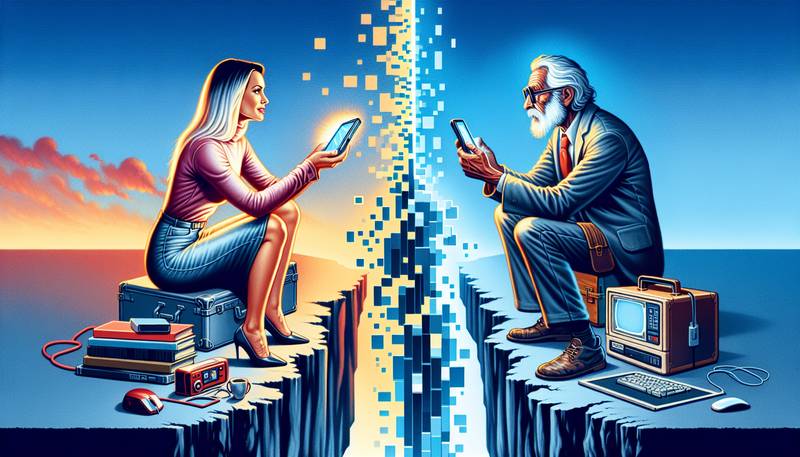The Digital Divide: Bridging the Gap with Technology

Introduction
In the age of the internet, technology has become an essential part of our daily lives. From communication to work, entertainment to education, technology plays a pivotal role in shaping our experiences. However, for a significant portion of the population, access to these technologies is limited or non-existent. This gap in access to technology is known as the digital divide, and it has far-reaching consequences for individuals and society as a whole. In this article, we will explore the digital divide, its causes, and how technology can be used to bridge this gap.
The Digital Divide: What is it and Who is Affected?
The term "digital divide" refers to the gap between individuals who have access to modern information and communication technology and those who do not. This divide can be due to a variety of factors, including socio-economic status, geographic location, age, and education level. Those most affected by the digital divide are often low-income families, rural communities, the elderly, and those with lower levels of education. The digital divide has tangible effects on these individuals, as it limits their access to job opportunities, healthcare, education, and social services.
Causes of the Digital Divide
There are several factors that contribute to the digital divide. One of the main causes is the cost of technology. For many low-income families, the expense of purchasing a computer or paying for internet access is simply out of reach. Additionally, there is often a lack of infrastructure in rural areas, making it difficult for residents to access high-speed internet. Another contributing factor is the lack of digital literacy among certain populations. Without the skills to use technology effectively, individuals are unable to take advantage of the opportunities it presents.
Technology's Role in Bridging the Gap
Despite the challenges presented by the digital divide, technology also has the potential to bridge this gap. By increasing access to affordable technology, providing digital literacy training, and investing in infrastructure improvements, we can work towards a more equitable distribution of technological resources. For example, initiatives such as the Federal Communications Commission's Lifeline program, which provides discounted internet access to low-income households, can have a significant impact on closing the digital divide.
Successful Approaches to Bridging the Divide
There are several successful approaches to bridging the digital divide that have been implemented in various communities. One such approach is the provision of public access to technology through libraries and community centers. These spaces offer free or low-cost access to computers and internet, as well as digital literacy training. Another successful approach is the distribution of refurbished computers to low-income families. Organizations like the National Cristina Foundation provide technology to those in need, empowering them with the tools to succeed in today's digital world.
Challenges and Potential Solutions
While there are many successful approaches to bridging the digital divide, there are also challenges that must be addressed. One of the biggest challenges is the lack of awareness about the digital divide and its impact on society. To overcome this challenge, we need to increase public awareness and advocate for policy changes that address the issue. Additionally, there is a need for more research on the most effective strategies for bridalling the digital divide. By understanding what works and what doesn't, we can tailor our interventions to better meet the needs of those affected.
Conclusion
The digital divide is a pressing issue that requires our attention. As we move further into the digital age, access to technology will become increasingly important. By working together to bridge this gap, we can create a more equitable and inclusive society. Through initiatives that provide affordable technology, digital literacy training, and infrastructure improvements, we can empower individuals and communities to succeed in today's digital world.
Call to Action
If you're interested in learning more about the digital divide and how you can help, there are many ways to get involved. Consider volunteering at a local library or community center, or donating to organizations that provide technology to those in need. Together, we can make a difference and bridge the digital divide with technology.


